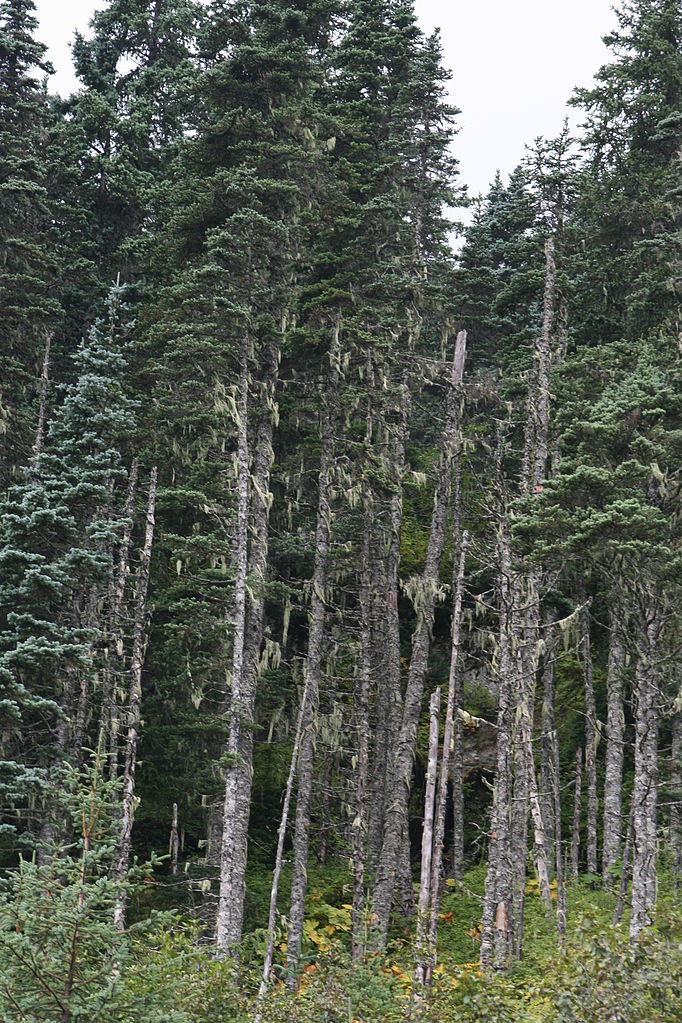Picea × lutzii as validly described in 1953 by Elbert Luther Little (1907-2004), in Journal of Forestry (Washington) 51st edition, is a nothospecies, a natural hybrid between white spruce (Picea glauca) and Sitka spruce (Picea sitchensis). It is commonly known as Lutz's spruce, named after Yale University forestry professor, Harold J. Lutz, who collected the type specimens in Alaska in 1950.
Description. Lutz's spruce is described as a tree growing to 100 feet (30 m) tall with needles and seed cones intermediate between the parent species.
- Needles are sharply pointed, but not as prickly as those of Sitka spruce. They are a little flattened in cross section and have fewer stomatal lines on the two outer faces.
- Seed cones most closely resemble those of Sitka spruce but are more rounded as they are in white spruce. In addition, they are shorter, measuring 1.2 to 2.8 inches (3 - 7 cm) long.
Description. This hybrid occurs naturally with the parent species on Alaska's Kenai peninsula and northern British Columbia, Canada, particularly along the Skeena river. It is noteworthy that the two parent species widely thought to be ecologically divergent and that Lutz's spruce fills the intergrade of the divergent zones.
The cross has also be sythetically reproduced in experimental hybridization programs.
